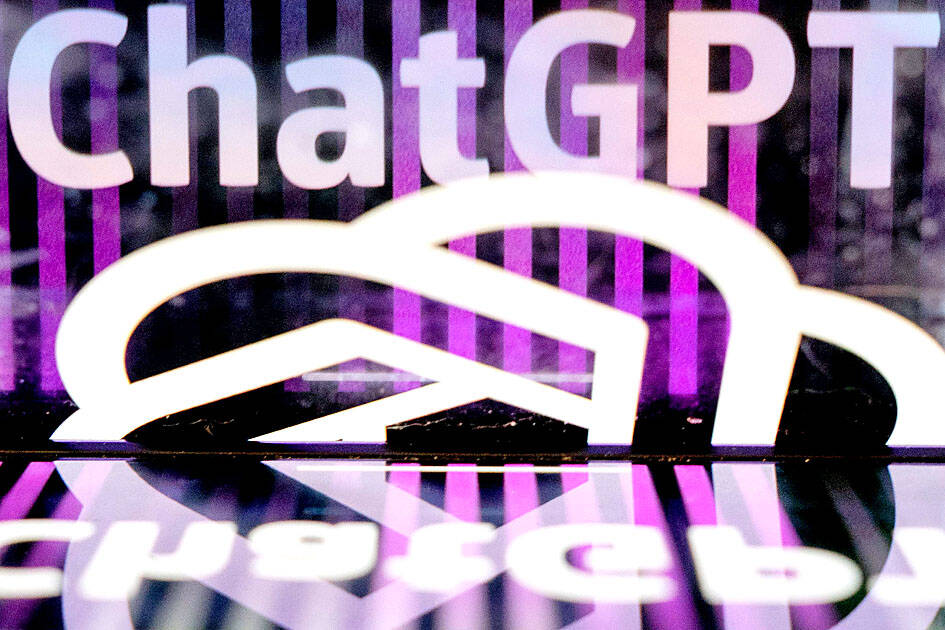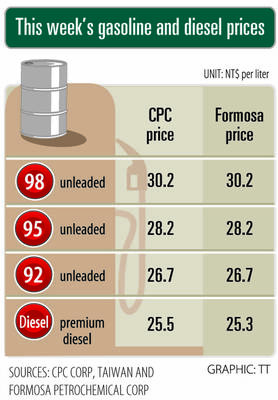The explosion of generative artificial intelligence (AI) has taken the world by storm, but one question all too rarely comes up: Who can afford it?
OpenAI Inc bled about US$540 million last year as it developed ChatGPT and said it needs US$100 billion to meet its ambitions, according to industry media The Information.
“We’re going to be the most capital-intensive start-up in Silicon Valley history,” OpenAI founder Sam Altman told a panel recently.

Photo: AFP
When Microsoft Corp, which poured billions of dollars in investment into OpenAI, was asked about how much its AI adventure would cost, the company answered with assurances that it is keeping an eye on its bottom line.
Building something even near the scale of what OpenAI, Microsoft or Google have on offer would require an eye-watering investment on state-of-the-art chips and recruiting prize-winning researchers.
“People don’t realize that to do a significant amount of AI things like ChatGPT takes huge amounts of processing power. And training those models can cost tens of millions of dollars,” independent analyst Jack Gold said.
“How many companies can actually afford to go out and buy 10,000 Nvidia H100 systems that go for tens of thousands of dollars a piece?” Gold asked.
The answer is pretty much no one and in tech, if you cannot build the infrastructure, you rent it and that is what companies already do massively by outsourcing their computing needs to Microsoft, Google and Amazon Web Services.
With the advent of generative AI, this dependency on cloud computing and tech giants deepens, leaving the same players in the driver’s seat, experts said.
The unpredictable costs of cloud computing “is a heavily underestimated problem for many companies,” Software AG chief product officer Stefan Sigg said.
Sigg compared cloud costs to electricity bills and said companies that do not know better are in for “a big surprise” if they let their engineers run up bills in the mad rush to build tech, including AI.
Microsoft’s signature cloud offer is Azure and some observers believe the giant’s all-in bet on AI is really about protecting Azure success and guaranteeing the cash cow’s future.
Azure has been the giant’s unsexy bread-winner for years, bringing in huge profits, but without attracting the headlines of an iPhone or social media that go straight to the consumer.
For Microsoft, “the golden goose is monetizing cloud with Azure, because we’re talking about what could be a US$20, US$30, US$40 billion opportunity annually down the road if the AI bet is successful,” Wedbush Securities Inc analyst Dan Ives said.
Microsoft CEO Satya Nadella said that generative AI is “moving fast in the right direction.”
Deeply respected on Wall Street, Nadella would have a six or nine-month grace period to show his bet is a winner, Ives said.
Microsoft acknowledges the risk, but insists that on AI, it must “lead this wave,” chief financial officer Amy Hood told analysts this month.
“We will charge for those AI capabilities, and then ultimately, we’ll deliver operating profit,” she said.
Piling up profit at the company founded by Bill Gates can only mean passing on the cost of AI to customers. From Main Street to Fortune 500, the dependency on the AI-amped would be an expensive one, and companies and investors are drumming up alternatives to at least reduce the bill.
“AI training, GPT training will become a very important cloud service going forward,” Spectro Cloud CEO Tenry Fu said.
His company, like many others in the sector, helps companies optimize cloud technology to reduce expenses.
“But after training, a company will be able to get their model back for real AI application” and the dependence on the cloud giants will hopefully be reduced, he added.
Regulators are hoping that they can keep up and not leave the giants in charge, imposing their terms on smaller companies.
“Law enforcers [must] ensure that ... opportunities and openings for competition ... are not getting squashed out by the incumbents,” US Federal Trade Commission Chairwoman Lina Khan told CNBC.

Merida Industry Co (美利達) has seen signs of recovery in the US and European markets this year, as customers are gradually depleting their inventories, the bicycle maker told shareholders yesterday. Given robust growth in new orders at its Taiwanese factory, coupled with its subsidiaries’ improving performance, Merida said it remains confident about the bicycle market’s prospects and expects steady growth in its core business this year. CAUTION ON CHINA However, the company must handle the Chinese market with great caution, as sales of road bikes there have declined significantly, affecting its revenue and profitability, Merida said in a statement, adding that it would

i Gasoline and diesel prices at fuel stations are this week to rise NT$0.1 per liter, as tensions in the Middle East pushed crude oil prices higher last week, CPC Corp, Taiwan (台灣中油) and Formosa Petrochemical Corp (台塑石化) said yesterday. International crude oil prices last week rose for the third consecutive week due to an escalating conflict between Israel and Iran, as the market is concerned that the situation in the Middle East might affect crude oil supply, CPC and Formosa said in separate statements. Front-month Brent crude oil futures — the international oil benchmark — rose 3.75 percent to settle at US$77.01

RISING: Strong exports, and life insurance companies’ efforts to manage currency risks indicates the NT dollar would eventually pass the 29 level, an expert said The New Taiwan dollar yesterday rallied to its strongest in three years amid inflows to the nation’s stock market and broad-based weakness in the US dollar. Exporter sales of the US currency and a repatriation of funds from local asset managers also played a role, said two traders, who asked not to be identified as they were not authorized to speak publicly. State-owned banks were seen buying the greenback yesterday, but only at a moderate scale, the traders said. The local currency gained 0.77 percent, outperforming almost all of its Asian peers, to close at NT$29.165 per US dollar in Taipei trading yesterday. The

RECORD LOW: Global firms’ increased inventories, tariff disputes not yet impacting Taiwan and new graduates not yet entering the market contributed to the decrease Taiwan’s unemployment rate last month dropped to 3.3 percent, the lowest for the month in 25 years, as strong exports and resilient domestic demand boosted hiring across various sectors, the Directorate-General of Budget, Accounting and Statistics (DGBAS) said yesterday. After seasonal adjustments, the jobless rate eased to 3.34 percent, the best performance in 24 years, suggesting a stable labor market, although a mild increase is expected with the graduation season from this month through August, the statistics agency said. “Potential shocks from tariff disputes between the US and China have yet to affect Taiwan’s job market,” Census Department Deputy Director Tan Wen-ling